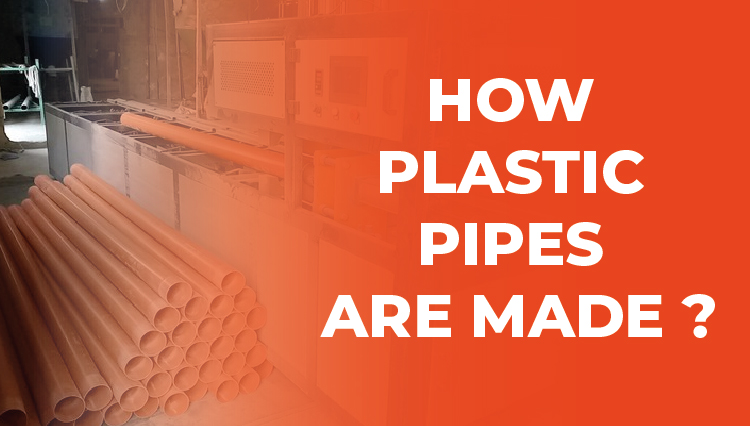How Are Plastic Pipes Made !
In this detailed article we will get to know that How Are Plastic Pipes Made in pipe manufacturing units in India.

Whether being used for plumbing, building circuits, or for gas there’s no denying that pipes are one of the most useful inventions of the modern world. Today we take a look at the PVC pipe manufacturing process flow to gain an insight on how different kinds of pipes are made. Join us as we go over all one needs to know to truly grasp the way pipes are made and designed.
When it comes to pipes there is no one way to manufacture them, and based on material, purpose, and company the process can change considerably. Here we have summed up a detailed look at the 4 most common ways on How Are Plastic Pipes Made in manufacturing PVC pipes .
- Mixing
In case of a natural material being used, it must first be mixed homogeneously with a colour concentrate. The resin polymer may be mixed with the colour concentrate in a central blender (which is situated remote from the extruder) or with an individual blender (mounted above the extruder hopper). The pipe is usually bundled in groups before it is placed on the truck or railcar. Bundling provides ease of handling and safety during loading and unloading.
- Extrusion
Extrusion is the process of converting raw plastic material into a long tubular melt, in an extruder. Although it is a simple process, it is one of the most reliable and common methods to manufacture pipes.
The first step is to load the raw material PVC into the chamber of an extruder. The material in the barrel is heated up according to requirements (up to 200°C). The high temperature melts the material, at which point it is pushed through a cavity or “die-head”. Once the molten material is pushed through the extruder it gets shaped into a pipe and retains the shape after it cools down. This simple process of extrusion makes pipes with low chances of irregularities or deformity. Extrusion can be used for multiple materials, but traditionally are used for one material at a time.
- Injection Moulding
Fundamentally, an injection moulding system is very similar to the process that an Extruder uses. Just like in the extrusion process, the raw material is fed into an Injection Moulding machine. The machine heats up via electrical heating and friction until it once again reaches melting temperature of the material. So, once the molten material moves through the machine, it is poured directly into a mould.
As soon as the material cools down, the mould eases up and the piece can now be ejected. Injection moulding is a tried and tested method that is used on countless day-to-day plastic products that are commercially available. It provides great fidelity and mass-production. And since moulds are highly durable too, it is economical in the long run.
- Rotational Moulding
The working principle behind rotational moulding is once again heat, but the overall process is quite different from the others. In this method, plastic or PVC in powder or pellet form is placed on a rotating furnace. Once the plastic comes in contact with the walls of the mould, it begins to melt, while the rotation makes sure it takes the desired shape. The Rotational Moulding method is simple and effective, however it’s used mostly for very specific parts production. Most commonly, it is used for the manufacture of large inspection chambers or water tanks. The merits of Rotational molding includes the fact that it allows one-piece products to be made with little to no effort. But generally, a rotational moulding machine has only a fixed mold it can use.
The Production of Fabricated Fittings
When we talk about Fabricated Fittings we mean the smaller PVC pieces that connect two pipes together in a plumbing system. Compared to other manufacturing processes that focus on pipes with simple cylindrical shapes, a pipe manufactured using this method can have angles and multiple entry points. Fabricated Fittings can be given more complex shapes, but require much more manual labor than the above-mentioned processes. The manufacturing of pipe fittings is manually inspected during the quality inspection.
Hope, your all the doubts are now clear about how are plastic pipes made.





